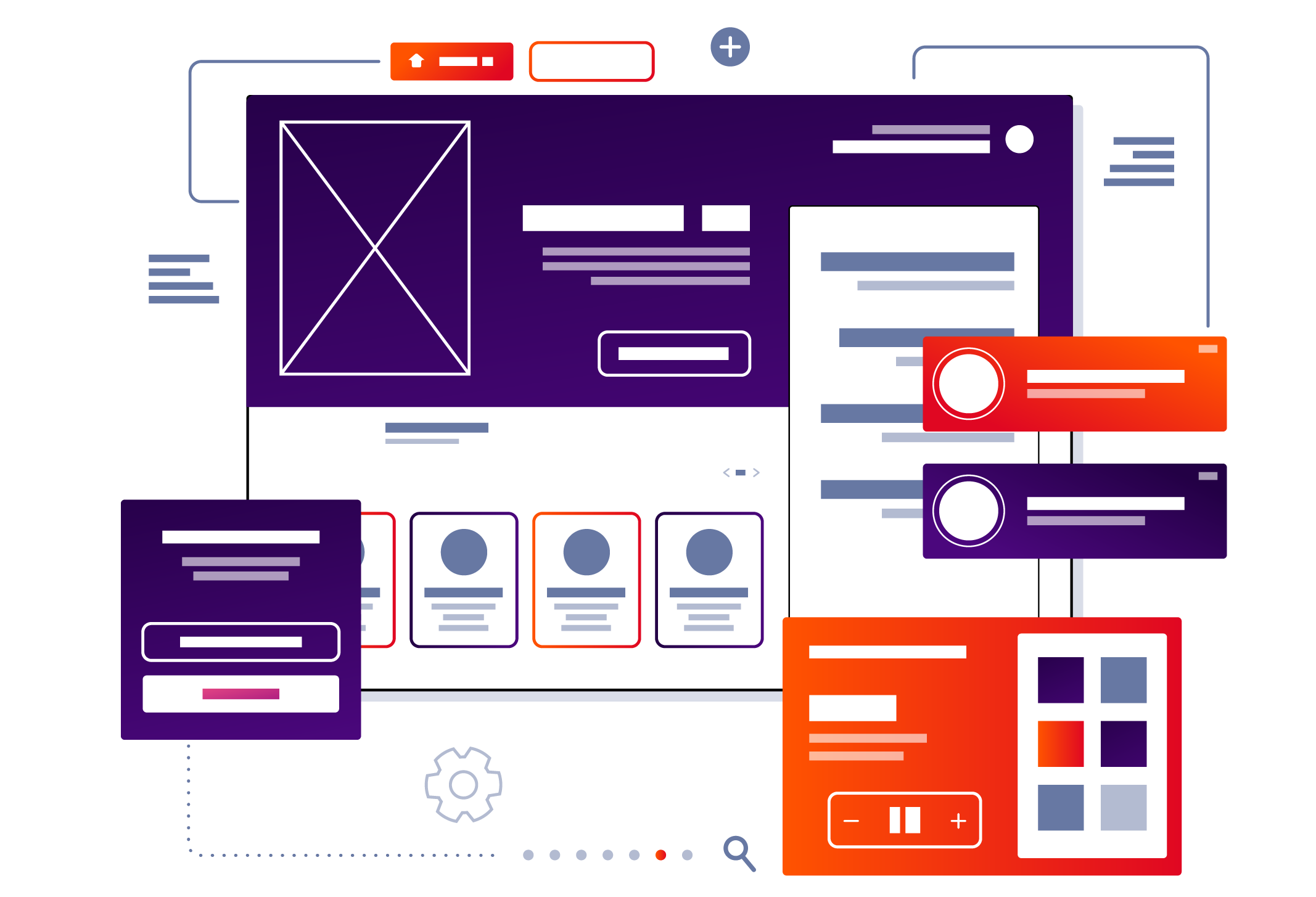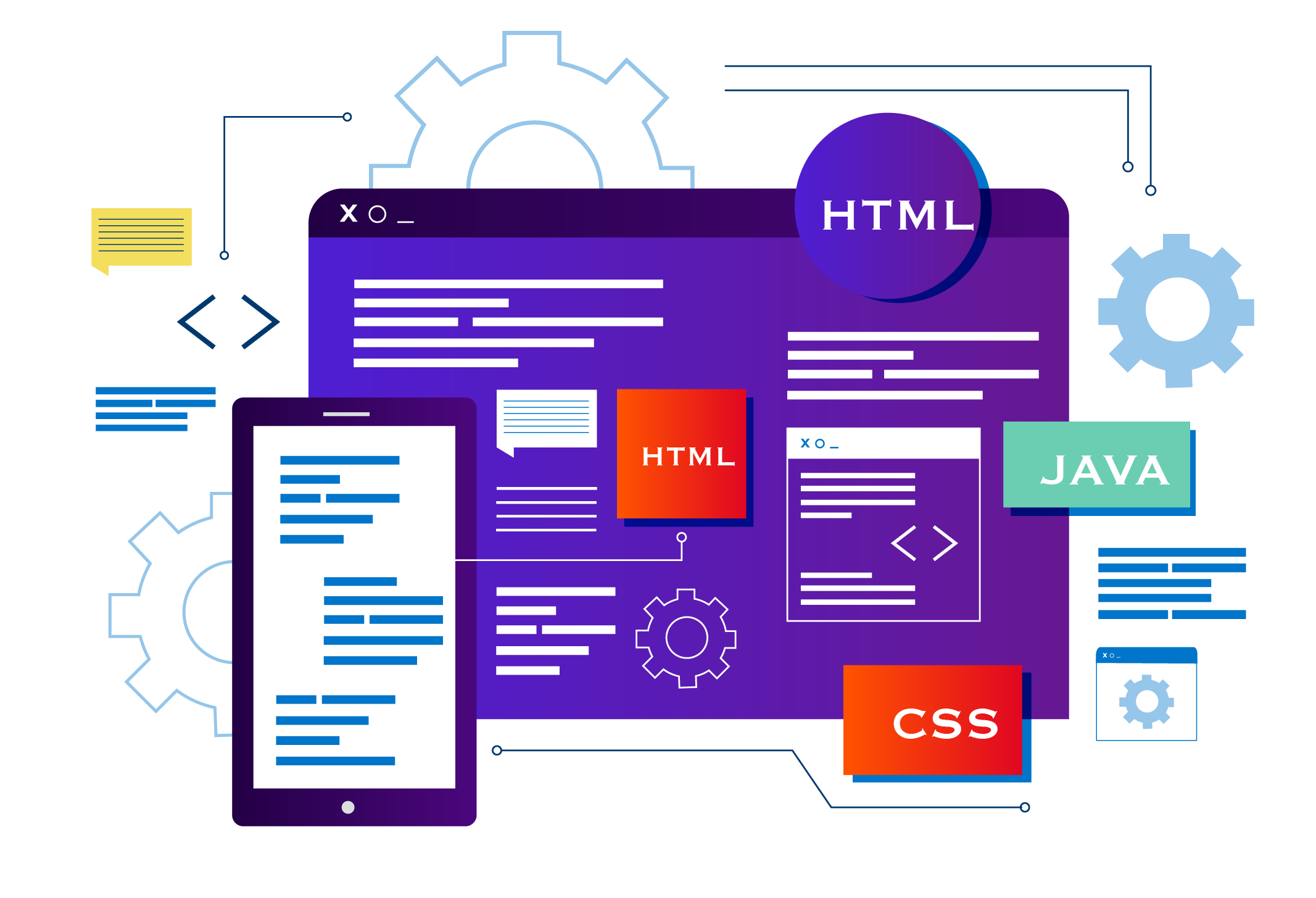Introduction to React Frontend: Responsive and Reactive UI in Modern Web Development
A potent JavaScript toolkit for creating dynamic and interactive user interfaces, the React frontend is created and maintained by Facebook. Developers may design reusable user interface components because of its component-based architecture, which improves productivity and maintainability. Because less direct manipulation of the actual DOM is required when using React’s virtual DOM, web page rendering and changes occur more quickly.

The value of responsive and reactive design in the current digital era cannot be emphasized. Web applications that are responsively designed appear and work well on a range of screens and devices, offering a consistent user experience. Conversely, reactive design emphasizes the user interface’s capacity to react instantly to human input, resulting in a more captivating and natural user experience. Collectively, these design tenets are essential for satisfying the needs of contemporary online users, who anticipate dependable, quick, and aesthetically pleasing apps.
The goal of this article is to provide readers with a thorough grasp of how to utilize React to create aesthetically pleasing, reactive, and responsive user interfaces. The fundamental ideas and functionalities of React frontend development will be explained to readers, along with how to use them to develop web apps that are not only aesthetically pleasing but also very efficient. The tutorial will go over the fundamentals of responsive design, show how to leverage React frontend’s state management and lifecycle methods to create reactive user experiences and explain advanced optimization strategies and best practices for React apps. Upon completion of this course, readers will possess the necessary knowledge and abilities to fully utilize React in contemporary web development.
Core Concepts, Features, and Advantages of React Over Other Frontend Frameworks
With its effective and adaptable method of creating user interfaces, the JavaScript framework React frontend has completely changed front-end development. Fundamentally, React frontend is centered around components, which are reusable code segments that encompass both structure and behavior. The component-based design makes it easier for developers to create and maintain complicated user interfaces by dividing them into smaller, more manageable components.

The virtual DOM is one of React’s most notable features. React frontend builds a virtual version of the DOM rather than altering it directly. React effectively refreshes the virtual DOM in response to changes, applying only the necessary adjustments to the real DOM afterward. Performance is greatly increased by this method, especially in applications with dynamic and interactive user interfaces. Furthermore, React’s unidirectional data flow guarantees predictable state management, which facilitates application maintenance and debugging.
There are several benefits to using React in frontend development. Because of its declarative approach to UI creation, React takes care of updating the UI as the state changes, allowing developers to specify how the UI should appear for a particular state. As a result, the code is easier to understand and maintain. Furthermore, development is sped up and functionality is improved by React’s extensive ecosystem, which includes programs like Next.js and Create React App. Developers can find answers and best practices more easily because of the comprehensive documentation and strong community support.
Frontend using React frameworks and libraries for a number of reasons. React is a library that is exclusively concerned with the view layer, in contrast to Angular, which is a complete framework. Developers now have the freedom to combine React with other frameworks and libraries as needed. Similar functionalities are provided by another well-known frontend framework, Vue.js, which stresses a more subjective approach to application construction. React has a competitive advantage because of its industry-wide adoption and adaptability.
Building Responsive Interfaces with React: Principles, Tools, Techniques, and Component Examples
A combination of specialized tools, useful approaches, and design principles are used when creating responsive interfaces using React frontend to make sure that online apps work and look great across a range of devices and screen sizes. The foundation of contemporary web development is responsive web design (RWD), which guarantees that consumers, whether viewed on a desktop, tablet, or smartphone, have a constant and ideal viewing experience.

Three fundamental ideas underpin responsive web design: media queries, adaptable images, and fluid grids. Fluid grids enable layouts to adapt dynamically to the size of the screen by using relative measures, such as percentages, in place of fixed units, such as pixels. Flexible pictures guarantee that media assets resize inside the components that they include, preserving the integrity of the design on various devices. Media queries, which are a component of CSS3, apply various styles according to the screen width, height, and orientation of the device.
React frontend offers a number of resources and methods for successfully putting these ideas into practice. Developers may write CSS that is scoped to specific components with the help of libraries like Styled Components and Emotion, which makes it simpler to maintain and change styles dynamically. Modern design principles are also followed by the pre-built responsive components provided by the Material-UI and React Bootstrap packages. These tools guarantee uniformity throughout the program and drastically cut down on development time.
Using CSS frameworks like Bootstrap or Tailwind CSS, which offer a solid basis for developing flexible and adaptable designs, is common for creating responsive layouts with React. Developers that want even more flexibility can use the CSS-in-JS technique, in which styles are written inside JavaScript files and React’s dynamic nature is used to change styles according to props and state.
Examples of React frontend components that are responsive show how these ideas work. For example, on smaller displays, a responsive navigation bar may shrink into a hamburger menu, and a responsive grid layout may change how many columns it has according to the width of the screen. When implementing such components, JavaScript logic is usually used to manage interactions and state changes, while CSS media queries are used for other purposes.
React frontend requires the study and use of responsive web design concepts, the use of specific tools and methodologies, and the creation of flexible components in order to build responsive interfaces. Developers may guarantee a smooth and engaging user experience across all platforms by incorporating these components into their applications. Complex and user-friendly web apps may be created using React due to their strength and flexibility when paired with contemporary responsive design techniques.
Creating Reactive User Experiences: Importance, React’s State and Lifecycle Methods, and Case Studies
In today’s online applications, reactive user experiences are essential because they give consumers dynamic, interactive interfaces that react instantly to their activities. The capacity of an application to rapidly adapt the user interface in reaction to changes in data or user input is known as “reactivity” in web development. This results in a smooth and interesting experience, which is necessary to maintain user satisfaction and enhance an application’s general usefulness.
React’s strong state management and lifecycle techniques make it an excellent choice for creating reactive interfaces. In React frontend, a component’s state refers to its dynamic elements, such as user inputs, and fetched data, that are subject to change over time. ‘this.state’ object in class components or the ‘useState’ hook in functional components are two ways that developers may efficiently manage and update these dynamic sections. React automatically re-renders the impacted components as the state changes, making sure the user experience is always up to date with the most recent data.
React frontend lifecycle methods, such as “componentDidUpdate,” “componentWillUnmount,” and “componentDidMount,” offer hooks into various phases of a component’s existence. With the use of these methods, developers may do certain actions at different times, including retrieving data when a component mounts or clearing up resources before it unmounts. Similar control over side effects is possible in functional components since these lifecycle effects are managed through the usage of the ‘useEffect’ hook.
Several case studies demonstrate how React may be used to create reactive user interfaces that work well. Facebook is one prominent example since it makes considerable use of React to deliver real-time updates on posts, messages, and alerts, guaranteeing a seamless and responsive user experience. Another illustration would be Airbnb, which uses React to dynamically filter and present real estate listings in response to user input, including search parameters and map interactions. These examples show how to use React’s state and lifecycle functions to build incredibly responsive and engaging user interfaces.
For current online applications to increase user pleasure and engagement, reactive user experiences are essential. React’s robust lifecycle techniques and state management make it the perfect framework for creating these kinds of user interfaces. Developers may ensure a smooth and delightful user experience by employing these capabilities to design apps that react dynamically to user activities and data changes. React can create reactive user interfaces (UIs), as demonstrated by real-world case studies. This highlights React’s ability to stimulate creativity and interaction in web development.
Advanced Techniques and Best Practices: Performance Optimization, Code Quality
For React apps to provide quick and responsive user experiences, performance optimization is essential. Code-splitting is a crucial method that minimizes initial load times by enabling the program to load only the code required for the current page. Code splitting is made easier by tools like Webpack, which breaks up large bundles into smaller ones that can be loaded only when needed. Lazy loading is another crucial tactic that improves speed by delaying the loading of components until they are required. The built-in React frontend tools “React.lazy” and “Suspense” make it easy to implement lazy loading.
It is equally critical to maintain both scalability and code quality in React frontend applications. The source will stay clean and understandable if linters like ESLint are used to adopt a uniform coding style. Component behavior is guaranteed, and early problem detection is facilitated by performing unit tests using frameworks like Jest and React Testing Library. One best practice that facilitates better maintenance and reusability is component modularity. Developers may maintain and update specific areas of the application without impacting the entire system by segmenting the program into smaller, self-contained components. React frontend and TypeScript may also be used to bring type safety to the code, which lowers runtime errors and boosts developer productivity.
More potential to improve apps may be found in advanced React subjects like state management libraries and server-side rendering (SSR). SSR, made possible by frameworks like Next.js, improves SEO and load speeds by rendering the original HTML on the server. This method works especially well for apps that require a lot of content and where SEO is essential. Particularly in large-scale applications, state management frameworks such as Redux and MobX offer organized methods of managing the state of the application.
Redux facilitates the maintenance of a single source of truth by providing a predictable state container, which facilitates state tracking and debugging. In contrast, MobX provides a less boilerplate-heavy and more flexible approach to state management, enabling developers to design reactive state trees that immediately change the user interface.
Building high-performance, stable, and scalable apps requires mastering advanced React frontend methods and best practices. Through performance optimization, adherence to code quality best practices, and investigation of more complex subjects such as state management and SSR, developers may fully utilize React to produce reliable and effective online apps.
React’s Recap, Encouragement, Impact, and Pattem Digital’s Advantage
With React frontend, developers can create fluid and reactive interfaces with unmatched benefits, enabling them to create dynamic and captivating online apps. As you progress with React js development services, take advantage of the many learning and experimenting possibilities it offers by utilizing its extensive ecosystem and supportive community. It is impossible to overestimate how much React has changed current web development, redefining user interface design and influencing the direction of digital experiences in the future. Select Pattem Digital as your reliable travel companion and get a React JS frontend developer; they can provide the know-how and creativity needed to maximize React’s potential and help your projects succeed.





